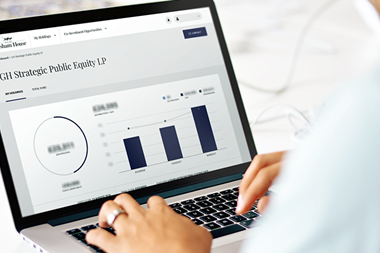UK - Total contributions to private pension schemes, including funded and unfunded occupational schemes, increased by 2% in 2007 to reach £85.2bn (€95.3bn) the Office for National Statistics (ONS) has revealed.
Updated figures from the Pensions Analysis Unit at the ONS, detailing pension contributions between 1995-2007, showed contributions almost doubled in the five years to 2006 from £49bn to £83.8bn.
In 2007, the ONS revealed, the rate of contributions slowed, posting just a 2% increase to £85.2bn, as it suggested the earlier growth had been driven by employers contributions to close deficits in funded occupational pension schemes and by 2007 many of these had moved into surplus.
Of the total £85.2bn in contributions, funded occupational schemes - which the ONS classified as mainly private sector defined benefit (DB) plans apart from the local government pension scheme (LGPS) - accounted for £44bn.
Around £38.3bn of this was paid into self-administered funds that are managed by scheme trustees or their investment managers, with just £5.7bn accumulated in insurance managed pension funds, which are mainly used for defined contribution (DC) schemes.
In the updated report, the ONS also revealed the total contributions to private pension schemes - comprising funded occupational schemes, unfunded occupational schemes and personal pensions including group personal pensions, stakeholder plans and Retirement Annuity Contracts (RACs) - have risen two and a half times since 1995.
But it pointed out employers' contributions to funded occupational pension schemes fell by 4% in 2007, although of the total contributions to funded plans 84% was estimated to be paid by employers.
Figures showed contributions to unfunded pension schemes also increased from
£8.6bn in 1995 to £21.5bn in 2007, although the ONS suggested as there are no funding pressures in these pensions, the increase could be attributed rising membership of public sector schemes and recent reforms to the level of employee contributions.
It said in another ONS report, the 2007 Occupational Pension Schemes Survey annual report, since the beginning of the century the number of contributing members increased by 18%, while the proportion of contributions paid by workers rose from 26% to 35% over the seven-year period.
It also revealed the annual average growth within personal pensions in 2006 and 2007 was 15%, which it attributed to the UK's 'pension simplification' programme that came into effect on 'A-Day' - 6 April 2006 - as it provided a higher annual and lifetime allowance for tax relievable pension contributions.
The analysis also highlighted a growing share of the total contributions to personal accounts is being paid by employers, up from 23% in 1995 to 44% in 2007 which, the report suggested, could be explained by the "increased availability of employer-sponsored pension schemes such as GPPs and stakeholder pensions".
Elsewhere, Mercer and Watson Wyatt have highlighted potential issues for employers ahead of the introduction of auto-enrolment and personal accounts in 2012.
Mercer has claimed the new system of personal accounts, which will be an option for employers without an existing pension scheme, is expected to cost businesses across the UK almost £3bn a year as all companies will have to auto-enrol employees into a qualifying pension plan, unless the workers opt-out.
The consulting firm suggested the current focus on personal accounts relates primarily to compliance issues but it warned "enrolling what might be a large proportion of the workforce into a pension scheme overnight must be considered a wider benefit strategy and design challenge".
Steve Charlton, principal at Mercer, said: "The introduction of auto-enrolment will have a dramatic impact on company remuneration budgets, especially for those companies with a low current uptake of membership in their pension schemes. In today's recessionary environment employers cannot contemplate simply absorbing this level of increased cost."
"Planning ahead by identifying the likely cost and considering the options available for mitigating this or spreading it over a longer period will help soften the impact on company balance sheets."
However, research by Watson Wyatt argued nearly a third of FTSE 100 companies have not yet considered the implication of the 2012 reforms on their pension scheme, and of those that had considered the impact 12% expected to increase employer costs while a further 12% intended to change the definition of pensionable earnings.
Watson Wyatt's 2009 FTSE100 DC Pension Scheme Survey found just 39% of large company defined contribution (DC) schemes use auto-enrolment, while 21% of DC schemes without this option had take-up rates of less than a fifth of eligible employees.
Paul Macro, senior consultant at Watson Wyatt, said: "Switching to auto-enrolment will have major cost implications for a number of employers. A significant minority of pension schemes currently have very low take up rates and the switch to auto-enrolment, combined with mandatory employer contributions, will have a major impact on their payroll expenditure."
Figures from the survey showed the average total maximum contributions, of both employer and employee, to DC pensions rose to 15.3% from 14.7% the previous year, which is significantly higher than the 8% of banded earnings required by the 2012 reforms.
If you have any comments you would like to add to this or any other story, contact Nyree Stewart on + 44 (0)20 7261 4618 or email nyree.stewart@ipe.com












No comments yet